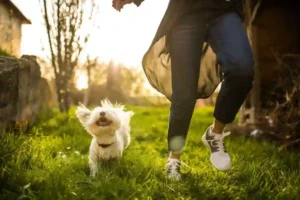EstoTurf is rapidly gaining recognition in the world of turf racing, revolutionizing the way horses are planned for competition. As turf racing continues to captivate crowds around the world, experts and fans alike are looking for compelling ways to improve race performance. In this article, we dig into master tips and bits of wisdom for winning on EstoTurf, focusing on organization, preparation, and critical thinking that can make all the difference on race day. Whether you’re a prepared savvy or unused to turf racing, these bits of knowledge will help guide your approach and advance your chances of success.
Understanding EstoTurf and its impact on turf racing
Before diving into specific tips for victory, it is essential to understand the importance of EstoTurf in a Turf racing setting. EstoTurf is a progressive racing surface designed to mimic normal grass, advertising a more stable and controlled environment than conventional turf tracks. Unlike the unusual nature of open air grass courses, EstoTurf gives the steeds ideal conditions to perform at their best.
The surface is designed to offer a combination of flexibility, strength and adaptability, guaranteeing that the steed’s involvement has negligible impact on their joints and hooves. This allows for faster recovery times between races and gives the steeds the ability to race at their peak potential which is sometimes not included due to normal turf.
The development behind EstoTurf allows trainers, owners and racers to optimize their horse’s performance by advertising a controlled and perfect environment for their horse’s controlled and race recreation. As turf racing becomes more competitive, exploiting the points of interest advertised by EstoTurf can play an essential role in achieving success.
Preparing your horse for EstoTurf racing
Proper planning is fundamental to any productive race, especially a surface like EstoTurf. To differentiate it from conventional turf tracks, EstoTurf has interesting features that coaches need to consider when planning their steeds. Here are some master tips to make sure your horse is ready for success:
1. Familiarize your horse with EstoTurf surfaces
Horses can be sensitive to changes in racing surfaces and may need some adjustments to transition to EstoTurf. It is important to slowly introduce the steeds to the surface in preparation. Doing this will help them adapt to the feel and responsiveness of the AstoTurf, reducing the risk of difficulty or confusion in the run.
Training on EstoTurf should begin with short, slow workouts with some time recently gradually extended as the horse develops more naturally on the surface. This slow adaptation is not to reduce the shock but rather to the horse discovering a cadence that suits the attractive surface and elasticity of the EstoTurf.
2. Optimize foot care and shoe coordination
Shouting horses on EstoTurf requires proper footwear to maximize performance and avoid damage. Foot care can actually be more basic when preparing on a manufactured surface like Estoturf, which can put a distinct weight on the horse’s hooves compared to normal grass.
Working with a talented farrier is essential for special requests on EstoTurf. Depending on your horse’s build and tacky fashion, custom shoes can be fundamental to ensuring ideal footing and comfort. A consistent approach to foot care will reduce the chance of slipping or uneven weight on the joints, giving your horse the best chance for success.
3. Taylor conditioning to the surface
The consistency of EstoTurf can improve the accuracy of session preparation, allowing coaches to closely screen the horse’s execution. It is important to adjust your conditioning program to take full advantage of surface benefits. Steeds racing on EstoTurf often take less time to recover from vigorous workouts, meaning coaches may insist on more visit sessions or tougher preparation regimes.
However, it should not be deciphered into overtraining. Steeds still need rest and recovery to maintain strategic distance from burnout or damage. The use of EstoTurf’s controlled surface allows coaches to implement more organized workout plans, driving consistency, stability, speed and power.
4. Adaptability and Flexibility Training Center
Because EstoTurf is outlined to mimic the characteristic development that a horse would engage in on turf, skill and adaptation preparation are crucial to winning on this surface. Such preparation creates a difference that maintains control during high-speed turns and heading changes, which are common in turf races.
Exercises that advance flexibility and agility, such as sidelong development, slope work, and sharp turns, should be incorporated into normal conditioning. This guarantees that the horse can handle the physical demands of racing on EstoTurf while maintaining top execution under race conditions.
Race Day Procedures for AstoTurf Races
Once a horse is groomed and conditioned for EstoTurf racing, it’s time to focus on race-day technique. Victory on EstoTurf does not depend on the preparation of the horse but on the strategic choices made by the coach, technique and team. Here are some tips to improve race-day performance:
1. Track it and get the weather conditions
Although AstoTurf provides reliable racing conditions, it is important to consider any external factors such as climate or adhesion that may affect the performance of the surface. Because EstoTurf is engineered, it is less affected by rain or extreme climates than conventional turf tracks, but changes in temperature and moisture levels can still alter the surface’s behavior.
Jockeys and trainers should screen these variables driving up to race time to anticipate how the surface might perform. For example, hotter climates can make the surface harder, while cooler climates can make it more flexible. Understanding how the AstoTurf responds to these changes can influence race strategies, such as situating and pacing.
2. Work with experienced racers who know Estoturf
Ordinary jockeys have an unequivocal advantage on race day with EstoTurf. Their ability to judge how the surface reacts at different speeds and how the horse reacts on the track is critical to victory. Choosing a technique with a demonstrated track record on AstoTurf means dealing with the pacing, timing and turns that are typical of a manufactured turf track.
Jockeys who have worked on EstoTurf are more able to change race strategy in real time, allowing them to anticipate potential problems and make fundamental changes to secure the best position within the race.
3. Idealize starting and positioning
In a turf race, the start is everything. On EstoTurf, where the surface is smoother and more surprising, steeds often start faster than on conventional grass tracks. In this method, it is essential to idealize breaks from starting entrances and to settle the horse early.
Horses that are too strong may burn out before long, while those that slack off at the start may struggle to catch up. Coaches and racers should work on technique, whether it’s breaking fast to pick up a great position or returning to moderate vitality for a more grounded wrap up. Adjusting the start can be a key figure in winning on EstoTurf.
4. Accelerate and control vitality through running
Estoturf provides a stable and forgiving surface, allowing the steeds to maintain a consistent pace throughout the race. Regardless, maintaining the appropriate vitality levels is still important to ensure a victory. Pacing is a key element that should be closely monitored by steps, especially in long runs.
Using the amazing qualities of EstoTurf, steeds can maintain an ideal speed without risking wearing themselves out quickly. Be that as it may, racers must be careful not to punch too early and too hard. The horse must be able to moderate the vitality for the last stretch, taking full advantage of the spring-like qualities of the surface to propel them forward in the final minutes of the race.
Post-race recovery on EstoTurf
After the race, it is vital to focus on the horse’s recovery, ensuring that they return to ideal condition for the following challenge. EstoTurf’s fine surface is less saddled at the joints than conventional turf, which aids recovery. Regardless, recovery conventions should still be performed carefully to minimize muscle fatigue and prevent injury.
1. Cool-down and hydration
As with any other tough surface, a legitimate cool-down period is essential after a race. Walking the horse around, providing hydration, and ad-libbing electrolyte-rich supplements can help the horse recover quickly. Estoturf’s gentle effect on the hoof can reduce stress on the body in general, but cooling down and stretching the muscles remain essential exercises.
2. Screen for signs of fatigue or injury
Even with EstoTurf’s smooth surface reducing the potential for damage, steeds should still be monitored for signs of weakness, weakness or distress after a race. Standard post-race checkups, including testing for potential muscle strains or joint problems, are fundamental to guaranteeing the horse is fit for future competition.
Conclusion
Incorporating EstoTurf into your turf racing regimen opens the modern door to Conquest, advertising an imaginative and reliable racing surface that benefits both steed and coach. By understanding the attractive properties of EstoTurf, planning your horse with custom-made preparation methods, and executing race-day procedures that utilize surface preferences, you can improve your chances of winning on this engineered turf.
EstoTurf’s impact on turf racing cannot be overstated, and its allocation represents a major step towards refining Don’s racing conditions and functional guidelines. Whether you’re focused on organization, preparation or race-day strategy, these master tips and experiences will help you tackle EstoTurf’s full potential to win in the world of turf racing.










Important Posts
How to Overcome Fear and Step Out of Your Comfort Zone
Current Trends & Practical Tips for Everyday Life
Breaking News & Insights – Stay Updated on General Topics